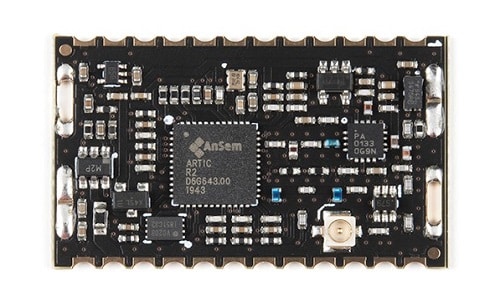It is designed to aid projects related to environment protection, wildlife tracking and sharing of critical medical information

For projects related to environmental protection, awareness or study, wildlife tracking, environmental monitoring, or processing, transferring and receiving emergency medical information, here’s a new solution that allows you to conduct them all.
The Integrated Open-Source Transceiver for ARGOS (IOTA) by Sparkfun is a communications board with which you can send and receive short bursts of data via the ARGOS satellite network, anywhere on Earth, including the Polar regions.
The Argos NEO Generic Economic Light Satellites or ANGELS is a 12U nanosatellite that weighs only 20 kilograms. Besides supporting ARGOS 2 and 3, ANGELS also supports ARGOS-4 to aid low signal strengths, further extending your transmitter’s battery life.
Behind IOTA’s low power
IOTA has a low current drawing capability and works with a very simple, very lightweight quarter-wave wire antenna.
The ARTIC R2 is an integrated, low-power, small-size ARGOS 2/3/4 single-chip transceiver. The ARTIC R2 chipset on IOTA operates from 3.3V and the onboard flash memory enables fast boot times.
For satellite uplink communication, ARTIC encodes, modulates and transmits user messages. For downlink communication, ARTIC demodulates, decodes and extracts the satellite message. The ARTIC can transmit signals in frequency bands around 400MHz and receive signals in the bands around 466MHz, under the ARGOS satellite system specifications.
If you don’t need the full transmit power, or want to conserve your battery life, you can transmit at reduced power too, thanks to the opto-isolated gain pin. The interface is 3.3V SPI and works with a huge range of microcontrollers.
For more details on ARTIC R2, visit here
About the ARGOS satellite system
The ARGOS satellite system was created in 1978 by the French Space Agency (CNES), the National Aeronautics and Space Administration (NASA) and the National Oceanic and Atmospheric Administration (NOAA) for collecting and relaying meteorological and oceanographic data around the world.
Using a constellation of Low Earth Orbit (LEO), polar-orbiting satellites, ARGOS provides two-way data communication that is supported by a global network of terrestrial receiving stations and two data processing centres for continuous, round-the-clock operation.
Along with transmitting data for short periods (that extend your transmitter’s battery life), ARGOS is also optimised for low power operation. As the satellite receivers are quite sensitive, signal strengths as low as -140dBm can be transmitted using much lower power compared to other satellite systems, again dramatically extending your transmitter’s battery life.
With 25 nanosatellites to complement the 7 traditional satellites carrying ARGOS instrumentation, it is now revolutionising satellite communications.
As of now, the ARGOS satellite system is currently restricted to specific programs and applications, which are related to environmental protection, awareness or study, or human life protection.
If your project meets the above applications, then the IOTA is perfect for executing your project and connecting to ARGOS satellite system.
See here to know how to use IOTA.





